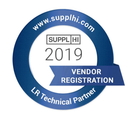Megaris
Science and Technology
Science and Technology
COMPETENCES AND SKILLS
Scientific Analysis and Literature ReviewScientific validation
of vital data is often required in process technology. Mature processes rely on a consolidated background of applications and experience, whereas new technologies and their compliance with more and more stringent regulatory limits require a much deeper analysis of scientific literature data. CFD and simulation protocols also are based on the full knowledge of process scenarios and this implies in turn the identification and analysis of scientific data. In this respect, MEGARIS has a long history of scientific analysis related to important projects.
Conceptual and FEED Studies
Failures of projects
are generally due to the inappropriate or wrong evaluation of the most critical factors during the conceptual and pre-feed studies. Lesson learnt from incidents and catastrophic failures tells us that a significant degree of irreversibility is found in many projects. The full assessment of a project context, the definition of the key-drivers, of the critical variables, of the unplanned scenarios and the unforeseen outcomes. When process safety and technologists are involved in the design, it's too late to go back and inherently prevent upsets and unrecoverable decisions. A good conceptual review is the key for a successful project.
Validation and International StandardsDesign solutions and choices related to process safety and environmental compliance are not dependent upon performance requirements but on accepted risk and impact limits. Validation of the rule-set is a fundamental part of the overall compliance process. Institutional entities and authorities are in charge to establish and validate risk and impact acceptability criteria. This impacts the whole castle of a QRA, a Safety Study or an Environmental analysis. The complex ALARP process requires specific competences and experiences, in order for making the assessment credible and acceptable. MEGARIS
has a long academic and working story.
International Regulatory Compliance Compliance with international regulation is based on the full identification of the legislation in force. In this respect the EU approach and the US approach, which are different and complementary to a certain extent, constitute the main reference for safety and environmental studies. The Seveso Directive, covering major hazards, and the OSHA regulation are the fundamental pillars of international process safety. Adoption of BAT and BACT are somehow the equivalent for EIA studies. It has to be remarked that ATEX, CLP, REACH, PED, OCA, USEPA, IBC, regulatory frames must be properly managed and implemented in the design. MEGARIS has a long story of successful studies with all these regulatory bodies.
Making a process, a plant, a technology really consistent with the scientific, regulatory and operating principles and procedures is challenging.
The market offers several solutions and proposers often
superficially follow just copy and paste box-ticking-concepts, ignoring or not accounting for
risks, non-compliance, off-set scenarios. On the other hand, requirements posed by
globalisation uncertainties, legislation and codes and standards need to be properly managed when technologies are developed and adopted in design and operation.
MEGARIS
specialise in scientific and high consultancy services, combining a strong academic background with multi-faceted expertise and a long experience gained worldwide in the relevant sectors.




